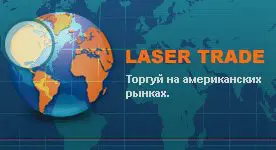
In the last month, there have been more reports of, that Russian companies hold SPOs - large shareholders sell part of their shareholdings to the market. In all cases it is mentioned, that as a result of such a deal, the free-float will increase. Worth brushing up on, what is this free-float, and what does it mean for shares and their owners.
What is free-float
Free float or free float shares are those shares, which do not belong to strategic investors and can be traded on the exchange.
For example, 52,3% Sberbank's ordinary shares are owned by the RF Ministry of Finance. This package will not change ownership for the foreseeable future. Therefore, at the auction, only the remaining 47,7% Shares. This will be the free-float of Sberbank shares.
High or low free-float. What is the difference for an investor.
The greater the number of shares in free float, the larger the shareholdings, which can be traded on the exchange. Free-float directly affects the liquidity of trades.
If free-float is low, then the liquidity of trading leaves much to be desired. For example, Gazprom Neft shares (free-float 4,3%), Raspadskaya (6,6%), TMK (2,3%), MGTS (5,3%) have low free-float and low liquidity.
Low liquidity, in its turn, contributes to higher stock volatility and may even affect the level of capitalization. Gazprom Neft, for example, shows a stable growth in financial results and a high level of efficiency, but on multiples it trades cheaper than other oil companies precisely because of the low free-float.
Read also: Market Multipliers Guide
Actions, aimed at increasing free-float, in such cases can become a positive driver.
For example, Raspadskaya may be spun off from EVRAZ this year. The proposed allocation scheme assumes, that EVRAZ shareholders will own Raspadskaya directly. This means, that instead of one major shareholder represented by EVRAZ with more than 90% Raspadskaya will have many shareholders with different shares, and free-float will grow from 6,6% to 30%. This will increase the liquidity of trading and may even attract the attention of index funds..
Why index funds love high free float
Free-float is often taken into account when forming indexes. This makes it possible to more adequately represent the picture of the market in the index and make its structure available for copying by investment funds and private investors..
Different index providers can count free-float in their own way. For example, Moscow Exchange deducts blocks of shares from free-float, Belonging:
• The state, its institutions and state corporations
• Treasury packages
• Shares encumbered by third parties
• Packages of shares, owned by top management and their affiliates
• Packages of shares over 5%, excluding investment shares, pension and other funds.
An increase in free-float may increase the weight of a stock in the index, which will lead to purchases from passive funds, who copy the structure of the index in their portfolios. The most indicative are the changes in the composition of the MSCI Russia index.. Foreign investors are guided by this index, investing in shares of Russian companies. Total passive funds, copying the structure of this index, can be estimated in $30 billion.
Read also: What is a stock index?
The MSCI Index Committee takes into account free-float using the FIF coefficient when distributing weights in the index (Foreign Inclusion Factor). The indicator is based on the share of shares in free float and the possible limits for foreign ownership. In the case of MSCI Russia, the FIF ratio is usually very close to the free-float ratio, calculated by the Moscow Exchange.
How to find out the composition of shareholders
Usually, companies try to disclose shareholder structure on their official website. This information can be found in the section "Shareholders structure", "Share Capital Structure" or "Share Capital".
Important to consider, on what date this information was published, since the shareholder structure may change from time to time. Below is an example of such a structure for Rosneft.
NPO AO NSD usually acts as a nominee holder, that is, in fact, these shares belong to a wide range of investors and can be classified as free-float. Also in free float are shares, owned by "other minority shareholders". In this way, free-float of Rosneft shares is 11%. It is with this coefficient that they are taken into account in the Moscow Exchange index.


